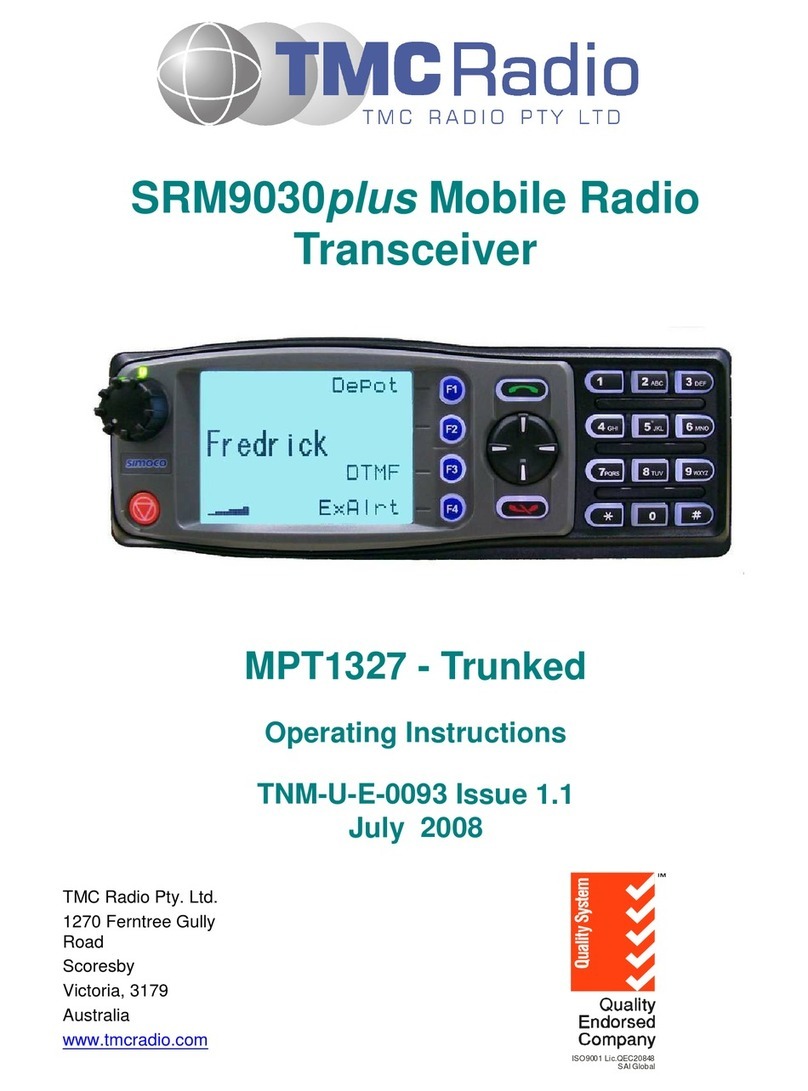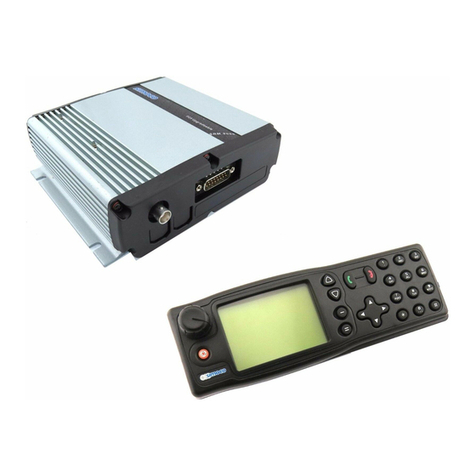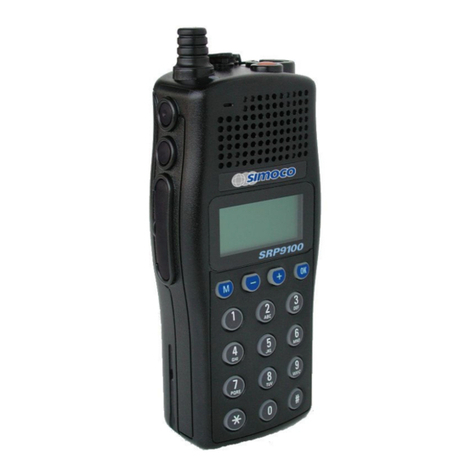
SRM9030plus ~ PMR Mobile Radio ser Guide
© Comgroup Australia 2010 iv TNM- -E-0092 Issue 1.1a
5.9 Auxiliary Output ........................................................................................19
6. SET P ...........................................................................................................20
6.1 Setup Sub-Menus......................................................................................20
6.1.1 User Options............................................................................................21
6.1.2 Mute Adjust..............................................................................................21
6.1.3 Phone Book Edit......................................................................................22
6.1.4 Alert olume ............................................................................................24
6.1.5 Information...............................................................................................25
6.1.6 Network ...................................................................................................26
7. SPECIAL F NCTION B TTONS ..................................................................27
7.1 Monitor.......................................................................................................27
7.2 Squelch Defeat..........................................................................................27
7.3 Reset ..........................................................................................................27
7.4 Scan ...........................................................................................................27
7.5 Auxiliary.....................................................................................................27
7.6 Send-2........................................................................................................27
7.7 Transpond .................................................................................................27
7.8 CTCSS........................................................................................................27
7.9 Mute ...........................................................................................................27
7.10 External Alert .........................................................................................27
7.11 Go to Chan A, B, C, D ............................................................................28
7.12 Special Enc 1…8....................................................................................28
7.13 Alarm ......................................................................................................28
7.14 Repeater Defeat .....................................................................................28
7.15 Low Power .............................................................................................28
7.16 Handsfree (VOX) ....................................................................................28
7.17 DTMF Mode ............................................................................................28
7.18 Scrambler On/Off...................................................................................28
8. OPTIONS .......................................................................................................29
8.1 Quick Release Transceiver Kit ................................................................29
8.2 Microphone/Control Head Extension Lead.............................................29
8.3 VOX Handsfree Option .............................................................................29
8.4 Internal Systems and Interface Option (MA-DMAP) ...............................29
8.5 Internal GPS and I/O Option (MA-ASIG) ..................................................29
8.6 Cross-linked Cable ...................................................................................29
































